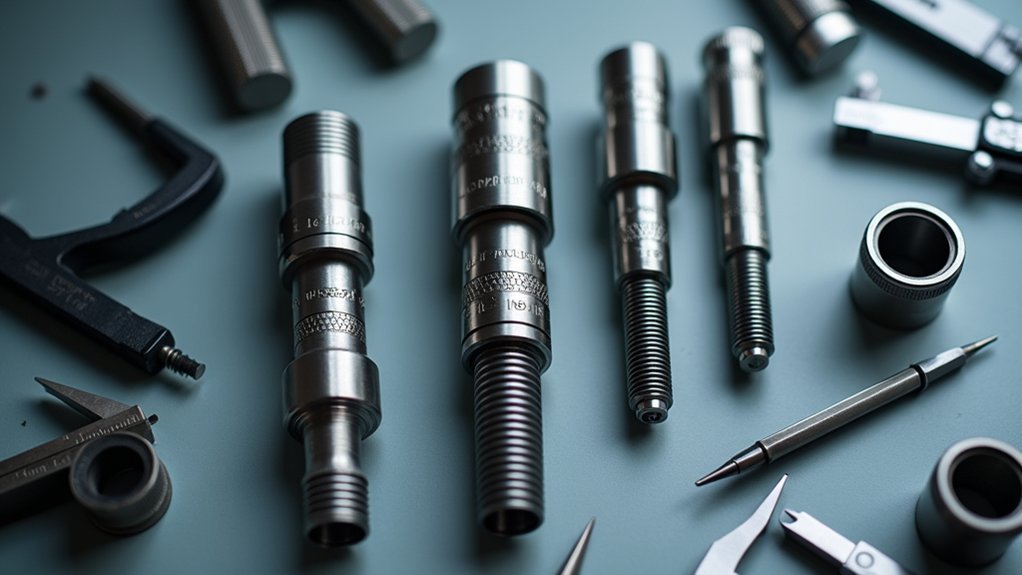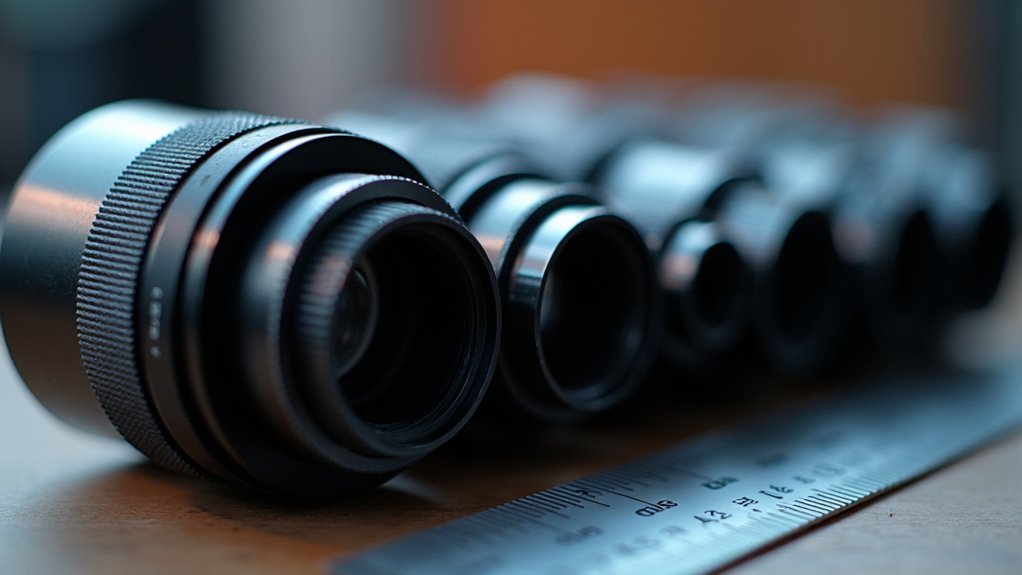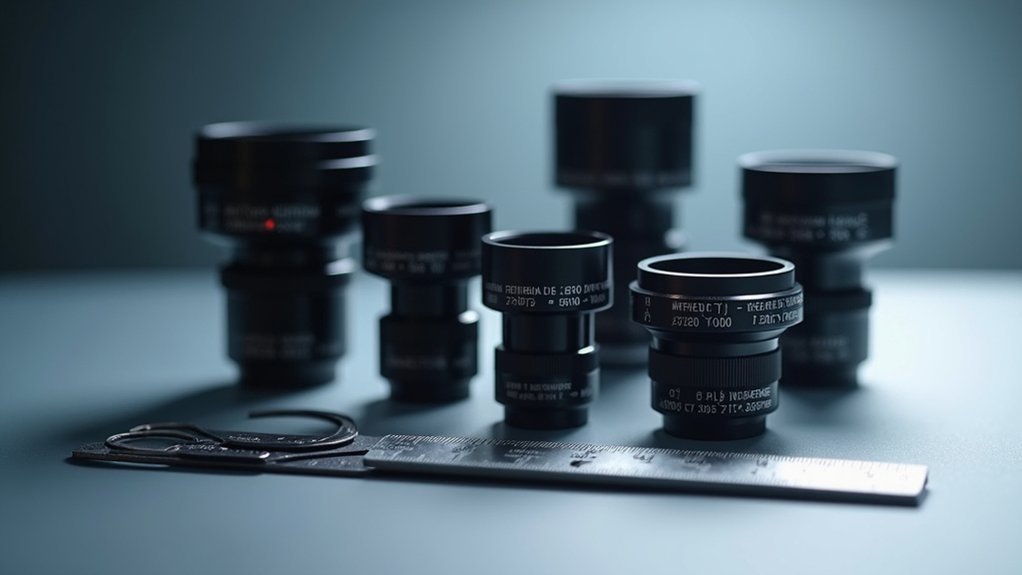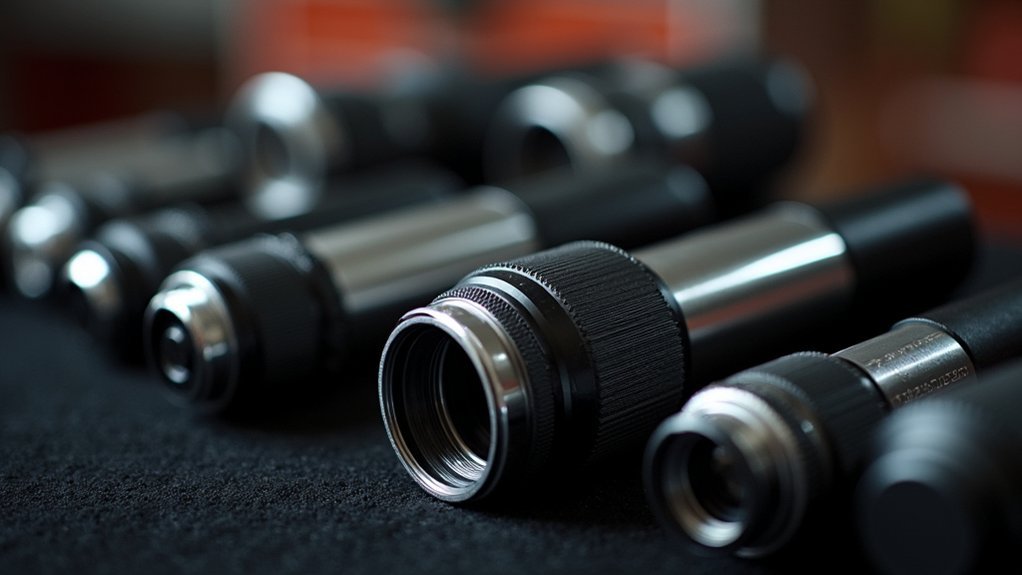Microscope objective compatibility depends on matching thread standards to your system. Common formats include RMS (20mm×1mm pitch), DIN (20mm), and M25×0.75 for heavier objectives. You’ll need to measure your microscope’s thread diameter and pitch with calipers and a thread gauge for accurate identification. Mismatched threads can damage equipment and compromise optical alignment. The right connection guarantees peak performance and prevents costly mistakes in your imaging setup.
Understanding Microscope Objective Thread Standards

When you’re working with microscope objectives, knowing the thread standards becomes essential for proper equipment compatibility. The most widespread is the RMS standard, featuring a 20mm diameter with a 1mm pitch—a configuration you’ll find in most laboratory microscopes.
Microscope objectives rely on precise thread standards—most commonly the 20mm diameter, 1mm pitch RMS configuration found in standard lab equipment.
For European systems, you’ll often encounter the DIN standard, which maintains the same 20mm diameter but may utilize different pitch measurements.
If you’re dealing with heavier, high-end objectives, look for the M25x0.75 standard, which provides enhanced stability for larger optics.
Before purchasing new objectives, always verify your microscope’s specific thread size and pitch. Mismatched threads aren’t just inconvenient—they can cause serious optical misalignment, compromising your imaging quality and potentially damaging your equipment.
Common Thread Sizes for Research-Grade Objectives
Although standardization exists across many brands, research-grade objectives feature several common thread sizes you’ll need to recognize for proper compatibility. The M25 x 0.75 thread is widely used for standard microscopy applications, while the M28 x 1.0 provides additional stability for specialized equipment.
| Thread Size | Common Use | Compatibility | Considerations |
|---|---|---|---|
| M25 x 0.75 | Standard microscopy | Most brands | Most versatile |
| M28 x 1.0 | High-precision systems | Research equipment | Enhanced stability |
| 1″ x 20 TPI | Specialized applications | Limited cross-compatibility | Non-metric alternative |
| Proprietary | Manufacturer-specific | Single brand only | Potential alignment issues |
Always verify thread pitch and diameter through accurate measurement before purchasing. Using properly sized objectives prevents alignment issues and guarantees peak performance in your optical systems, particularly when working with equipment from different manufacturers.
Adapting Objectives With Different Thread Specifications

With proper measurement skills established, let’s now address the practical challenge of working with objectives that have different thread specifications.
You’ll often encounter variations in threads per inch (TPI) and thread diameter that require careful adaptation. When faced with mismatched thread sizes, focus on accurate measurement of both your existing equipment and the new objective’s specifications.
Consider the number of plies in the thread—a 50/3 offers greater tensile strength than a 50/2 configuration despite sharing the same thread weight designation.
Tapered versus straight threads demand different approaches. Use a thread chart to verify compatibility before attempting to connect components.
Remember that even small variations in thread diameter can compromise system integrity, so precision matters when adapting objectives to your existing setup.
Measuring Your Microscope’s Thread Mount
Accurate measurement of your microscope’s thread mount forms the foundation of successful objective compatibility. Using a caliper, measure the major diameter across the thread crests for precise dimensions.
Next, determine if your thread type is straight or tapered, as this affects how components fit together.
A thread pitch gauge is essential for identifying threads per inch (TPI) in Imperial systems or pitch in metric systems. Place the gauge against your threads until you find a perfect match.
Record both your major diameter and TPI/pitch measurements carefully.
Finally, compare your measurements to a standardized thread chart to identify your microscope’s exact thread specification. This methodical approach guarantees accurate compatibility when purchasing new objectives or adapters, saving you time and preventing costly purchasing errors.
Selecting Compatible Objectives for Specialized Imaging Applications

Selecting the right objectives for specialized imaging applications requires careful consideration of several critical factors beyond basic thread compatibility.
When choosing objective lenses, you’ll need to verify they meet your specific imaging requirements while physically fitting your system.
- Verify the thread size specifications (RMS or M25) as different manufacturers use varying standards—some may require M6 x adapters for proper mounting.
- Match the numerical aperture (NA) to your resolution needs—higher NA values provide better light collection and finer detail.
- Consider working distance carefully to accommodate your sample thickness and experimental setup.
- Check if specialized coatings are needed for your specific imaging conditions.
- Ascertain the thread per inch count is compatible with your microscope’s mount to prevent cross-threading or unstable connections.
Frequently Asked Questions
How Do I Know What Thread Size I Need?
You’ll need to measure the existing threads using a caliper and thread pitch gauge. Check the major diameter and TPI/pitch, then consult a thread chart to identify the correct size for your application.
How Do You Match Thread Size?
To match thread size, you’ll need to measure the major diameter with calipers and check pitch with a thread gauge. Then compare your measurements to standard thread charts for proper identification and compatibility.
What Is the Numbering System for Thread Size?
Thread sizes use multiple numbering systems: U.S. weight standards (higher number = finer thread), Gunze Count from Japan, and the Tex system (measures grams per 1,000 meters). You’ll encounter these when selecting appropriate threads for your projects.
What Is Thread Sizing?
Thread sizing refers to the measurement systems you’ll encounter when choosing threads. It includes weight standards (30/40/50 wt.), the Tex system, and ply counts that determine thickness and strength for your specific application.
In Summary
When you’re selecting objectives for your microscope, always check the thread specifications first. With the right knowledge of RMS, M25, M26, or M32 threads, you’ll avoid costly compatibility issues. Don’t hesitate to use adapters when needed, but remember they might affect optical performance. Take precise measurements of your microscope’s mount to guarantee you’re investing in objectives that’ll integrate seamlessly with your imaging system.





Leave a Reply